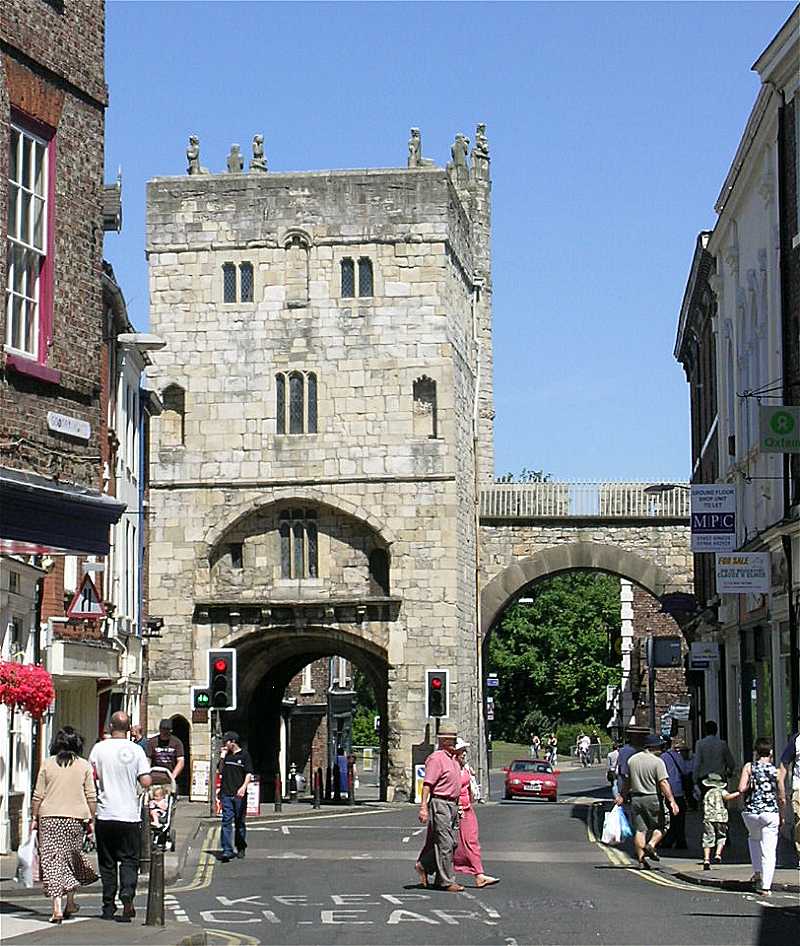Monk Bar is the tallest and most elaborate of York’s four principal medieval gatehouses, known as “bars,” and stands as a testament to the city’s rich historical tapestry. Situated on the northeastern stretch of York’s city walls, Monk Bar has served various roles over the centuries, from a formidable defensive structure to a prison and, more recently, a museum. Its architectural grandeur and historical significance make it a focal point for understanding York’s medieval past.
Historical Background
Constructed in the early 14th century during the reign of Edward III, Monk Bar was built to replace an earlier 12th-century gate known as Munecagate. The name “Monk Bar” likely derives from its proximity to the nearby Monk Bridge or perhaps from the monastic communities that once inhabited the area. As a critical point of entry into the city, Monk Bar was designed not only to control access but also to serve as a defensive stronghold against potential invaders.
Architectural Features
Monk Bar is a four-storey gatehouse, making it the tallest of York’s bars. Its robust construction includes a portcullis, murder holes, and arrow slits, all indicative of its defensive purpose. The portcullis, a heavy grilled door that could be swiftly lowered, remains in working order, showcasing medieval engineering prowess. Murder holes allowed defenders to drop harmful substances on attackers, while arrow slits provided protected vantage points for archers.
The gatehouse also features circular bartizans—small overhanging turrets—at its northeastern and southeastern corners, adding both to its defensive capabilities and aesthetic appeal. A narrow crenellated gallery at the third-floor level offers a vantage point for surveillance and defense.
Functional Evolution
Over the centuries, Monk Bar has adapted to various roles. In the 16th century, parts of the bar were used as a prison, notably for housing rebellious Catholics during periods of religious turmoil. The rooms above the gateway were also rented out from 1440 onward, indicating their use for residential or commercial purposes.
In the late 15th century, during the reign of King Richard III, the top floor was added, further enhancing its defensive and administrative functions.
The Richard III Experience
From 1993 until its closure in 2020, Monk Bar housed the Richard III Experience, a museum dedicated to the life and times of the controversial monarch. The museum offered insights into Richard III’s reign, the Wars of the Roses, and the Battle of Bosworth, utilizing multimedia presentations and historical artifacts.
The museum’s closure was part of broader changes to York’s historical attractions, with the space now serving as part of the City Walls Experience, offering visitors a glimpse into the city’s medieval defenses. Wikipedia
Preservation and Public Access
Today, Monk Bar remains a prominent feature of York’s city walls, which are the most complete medieval town walls in England. Visitors can explore the gatehouse and its surroundings, gaining insights into the city’s defensive strategies and architectural advancements. The preservation of Monk Bar allows for a tangible connection to York’s past, offering educational opportunities and a sense of historical continuity.
Conclusion
Monk Bar stands as a monument to York’s medieval heritage, reflecting the city’s strategic importance, architectural innovation, and adaptability through the ages. Its enduring presence offers both locals and visitors a window into the past, enriching the cultural tapestry of York and underscoring the significance of preserving historical landmarks.
Resources
- https://yorkshirebylines.co.uk/region/monk-bar-yorks-medieval-gateway-to-history/
- https://her.york.gov.uk/Monument/MYO4227
- https://citydays.com/places/monk-bar/

